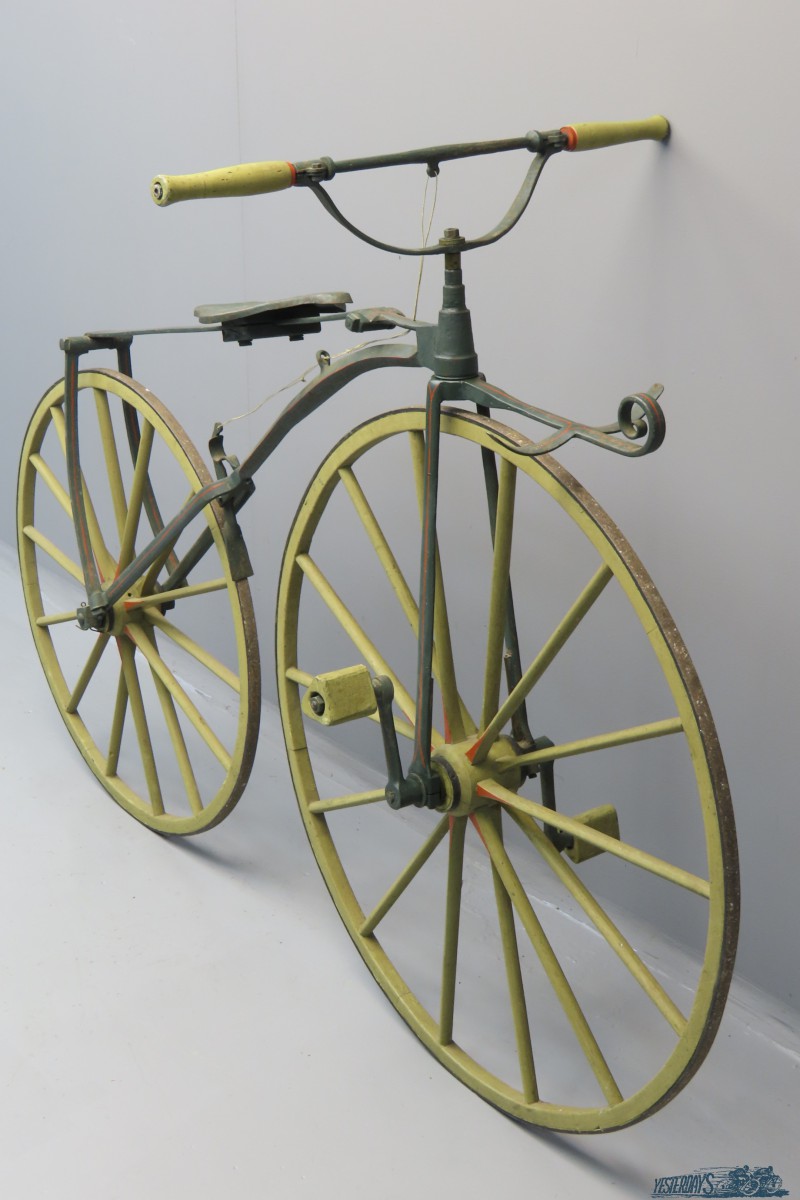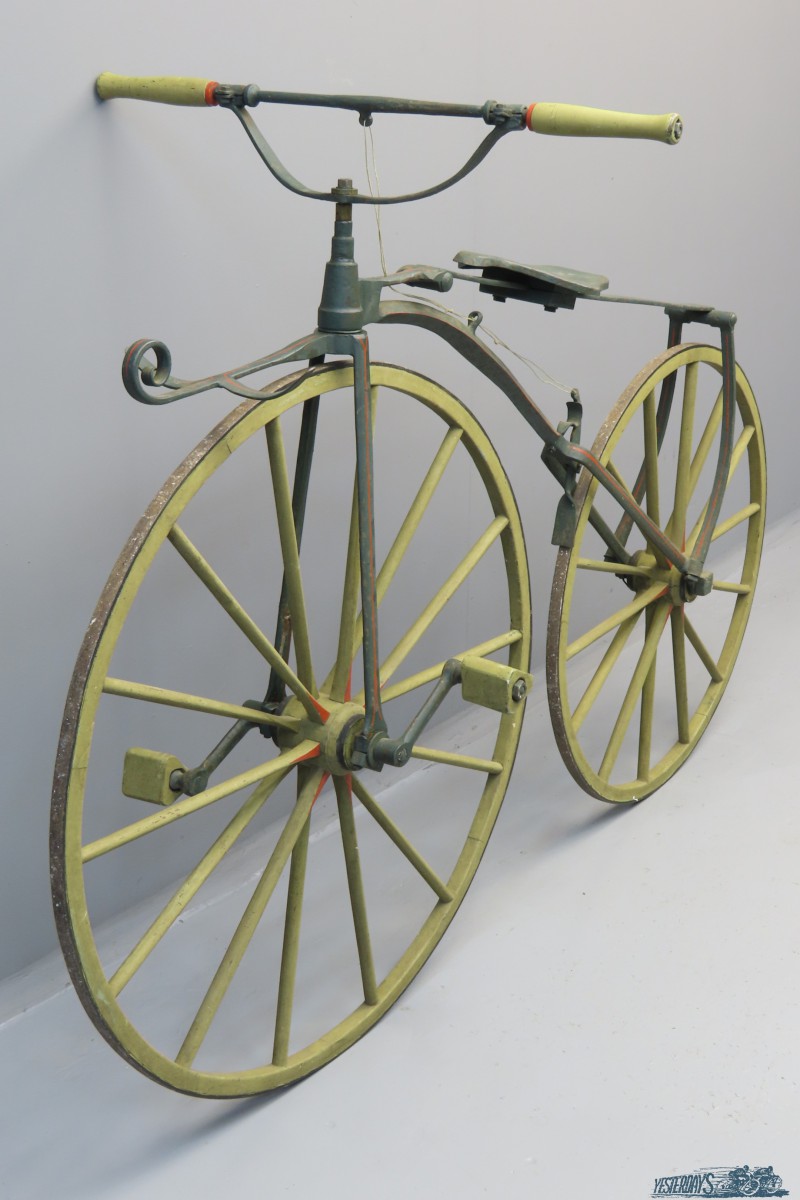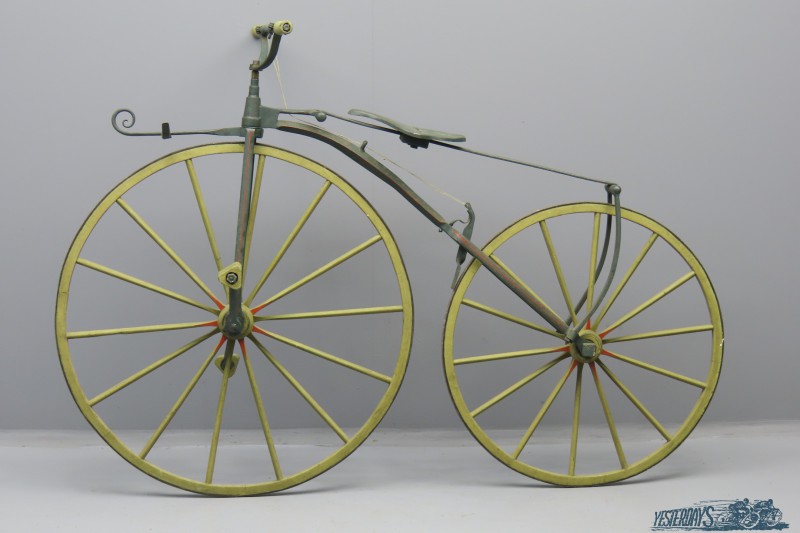Description
Velocipede circa 1870
At the 1867 Paris Exhibition, the French firm of Michaux got a lot of publicity for developing the first commercially-viable version of a two-wheeled, human-powered bicycle: the Velocipede. While they were not the first to do this, Michaux was the first to tinker and perfect the design. When it was demonstrated at the Paris Exhibition, the Velocipede brought worldwide attention to the concept of cycling and sparked a craze of experimentation that would last until the early 1870s.
The brake is a steel lever that is pushed against the steel rim of the rear wheel. The braking lever is connected to the handlebar by a piece of string and is activated by twisting the handlebar in order to shorten the string.
The machine has a square-section solid frame and forks and the wheels – ca 38 and 32 inch- are in good condition. Sticking out over the front wheel are the “hock rests”, meant to carry the rider’s lower legs and get them out of the way of the fast-turning pedals when going quickly downhill. The saddle height is ca 38 inch. The pedal cranks are non-adjustable and have triangular wooden pedals. This Velocipede is in fine overall condition, the only missing part appears to be the saddle cover.






